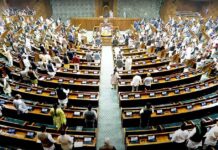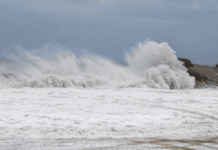Sri Vijaya Puram: The playing field just got a little wider. The Ministry of Youth Affairs & Sports has approved the establishment of three additional Khelo India Centres (KICs) in the Andaman & Nicobar Islands, a move that further cements the archipelago’s growing presence on India’s grassroots sports map. With this, the total number of operational KICs in the UT now stands at eight, extending across all three districts.
The latest centres will come up in North & Middle Andaman for Hockey, and in Nicobar district for Volleyball and Football. These additions are not just about infrastructure, they represent opportunity. For many young athletes in remote corners of the Islands, structured training and exposure remain limited, often curbing potential before it can be explored.
Each Khelo India Centre under the national flagship scheme is designed to offer specialised coaching by former champion athletes, along with access to standardised equipment and training modules. But in the context of the Islands, it means more: local sports enthusiasts often train without adequate facilities, relying on makeshift arrangements or travelling far to compete.
According to details released by the Directorate of Sports & Youth Affairs, the centres now include:
- Nicobar District: Badminton (BJR Stadium, Car Nicobar), Volleyball (Indira Park Ground, Kamorta), Football (Mini Stadium, Campbell Bay)
- North & Middle Andaman: Hockey (Forest Ground, Baratang), Archery (Vivekananda Stadium, Diglipur)
- South Andaman: Athletics (Netaji Stadium, Sri Vijaya Puram), Boxing (IRBn HQ, Port Mout), Kayaking (Police Line, APU)
The distribution shows a deliberate attempt to localise training across disciplines and regions, ensuring that sports talent isn’t confined by geography. For instance, Diglipur’s archery centre and Baratang’s hockey facility open doors for athletes who earlier had to travel to Sri Vijaya Puram for training camps or competitions.
The Directorate, which has been working closely with the Ministry and the Sports Authority of India, has described this as a “significant milestone” in fostering youth engagement. The move also reflects the government’s intention to move beyond metropolitan zones in scouting and grooming athletes for future national and international events.
In recent years, sporting interest across the Islands has surged, with growing participation in athletics, football, and water sports. But with interest outpacing infrastructure, there was a clear gap between enthusiasm and opportunity. The KIC model offers a structured bridge, merging coaching, competition exposure, and community engagement.
While most national sports schemes tend to spotlight medals and elite performers, the essence of the Khelo India movement is grassroots inclusion. And in regions like Nicobar and Baratang, where young athletes often play barefoot or self-train using limited gear, the shift from informal play to professional grooming could mark a turning point.
Local sports administrators have also pointed to the Centres’ potential in fostering leadership, discipline, and community building among youth. In areas with limited access to extracurricular avenues, sports can serve as both outlet and opportunity.
As the new centres become operational, the focus now turns to staffing, scheduling, and synchronising with school calendars to ensure maximum uptake. Training modules are expected to follow SAI’s national standards but will also be contextualised for the region’s climate, language and transport realities.
With the Islands now featuring across disciplines as diverse as boxing and kayaking, the vision is clear: to turn coastal boundaries into launchpads, and playgrounds into podiums.





